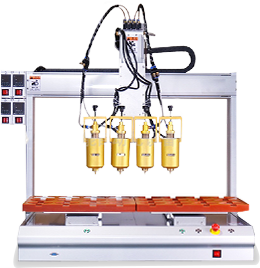

Metal industrial stamping parts are made of carbon steel, stainless steel, aluminum alloy and other metal plates. They are made by advanced stamping technology, and are precisely manufactured through blanking, punching, bending, and forming processes under the synergy of presses and precision molds. They have forms ranging from flat plates to special-shaped structures, and are widely used in many fields such as automobiles, electronics, machinery, and electrical equipment. They can be used as protective parts, structural support parts, and connection components for equipment, providing basic accessories with high precision and strong practicality for industrial production. With the characteristics of metal materials and the advantages of stamping technology, they adapt to the functional requirements of complex industrial scenes and are key basic components for the stable operation of industrial equipment.
Features
(I) Performance advantages
1. High strength and precision: The metal material gives the product high tensile and compressive resistance, and the stamping process ensures dimensional accuracy (tolerance can reach ±0.05mm), which is suitable for precision equipment assembly and resists external force impact in industrial environments.
2. Diversified adaptation: It supports customized production, and can design punching, bending, stretching and other structures according to needs, adapt to the protection, connection and support functions of different equipment, and meet multiple industrial scenarios.
(II) Process and cost advantages
1. Efficient production: Relying on CNC stamping equipment, large-scale and automated production is achieved, delivery cycle is shortened, and quality consistency is guaranteed.
2. Controllable costs: Metal raw materials are widely available, and the stamping process simplifies the processing process, effectively reducing production costs and improving product cost performance.
Features Dimension | Specific manifestations | Typical application scenarios |
Strength accuracy | High strength and impact resistance, tolerance ±0.05mm | Auto parts, precision instruments |
Adaptability | Customized structure to meet multiple functions | Electrical control cabinet, mechanical equipment |
Production efficiency | Automated mass production with short cycle time | Electronic equipment components, general hardware |
Cost Control | Wide range of raw materials, simple process, high cost performance | Industrial general accessories, basic structural parts |
3. Product Details
(I) Processing Technology
Adopt the "CNC stamping + precision forming" process: first pre-process the metal sheet by laser cutting, then complete the punching and blanking by CNC punching machine, and cooperate with the bending machine to realize complex shape forming, digital control throughout the process, to ensure dimensional accuracy and structural consistency, and support the processing of multiple types of products such as flat, bending, and stretching.
(II) Applicable Materials
1. Carbon steel: low cost and high strength, suitable for scenes with high strength requirements, such as mechanical structural parts and automobile chassis accessories.
2. Stainless steel: corrosion-resistant and easy to clean, used for food machinery, medical equipment, and outdoor protective parts.
3. Aluminum alloy: light weight and good thermal conductivity, suitable for electronic equipment housings and lightweight aerospace components.
(III) Quality Inspection
Build a multi-layer quality inspection system: Appearance inspection combines manual and machine vision to check surface defects; dimension inspection uses a three-coordinate measuring instrument to control key parameters; performance inspection covers tensile and hardness tests to verify mechanical properties, ensure that the product meets industrial quality standards, and escort the stable operation of the equipment.
 Headquarters tel.
Headquarters tel. E-mail.
E-mail.